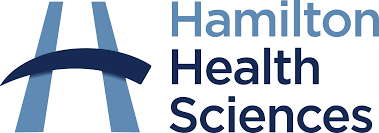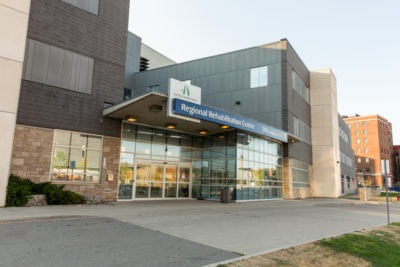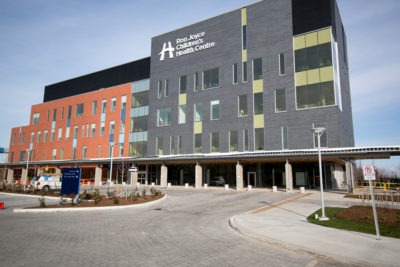Types of Orthotic Treatments We Provide
We provide orthotic treatment such as:
- Braces
- Foot, ankle, knee and hip orthosis
- Hand and arm orthosis
- Cranial (head) orthosis
- Cervical (neck and spine) orthosis
- Thoracic (back and spine) orthosis
- Custom shoe modifications or changes
Spinal Orthoses
A spinal orthosis is a brace used to support and align the spine to prevent pain, further injury, and stress on the structures of the spine. Different spinal orthoses can be used to support the lower back, the upper back, the neck, or a combination of these areas.
Spinal orthoses are often prescribed for patients who have:
- scoliosis
- postural or scheurmanns kyphosis
- neurofibromatosis
- spondilolysthesis
- low back pain
- arthritis
- degenerative disc disease or bulging/herniated discs
- spinal fractures due to trauma
Scoliosis Orthoses (thoracolumbosacral orthosis – TLSO)
Scoliosis Orthoses are used to hold the spine in a corrected position to prevent progression of scoliosis with the goal of avoiding surgery if possible. These devices are custom made to a cast, a scan, or measurements of the patient. A TLSO may also be used to stabilize the spine after corrective surgery for scoliosis.
Orthoses for Back Pain (lumbosacral orthoses – LSO)
These devices can be custom made or off the shelf, and help to prevent pain by decreasing the load on the spine, or preventing positions of the spine that cause pain.
Orthoses for Fractures: (cervico) thoracolumbosacral orthoses – (C)TLSO
These devices can be custom made or off the shelf, and help to prevent further injury to stable spinal fractures during the healing process.
Cervical Orthoses
These orthoses can be used to stabilize a fracture or help to support the neck in the event of neck weakness, and may extend lower than the neck if more support is needed.
Pectus Orthoses
These orthoses are off the shelf devices that are adjustable to fit each patient’s individual size. They place pressure on the sternum to prevent it from protruding which occurs in pectus carinatum and to correct this deformity.
Rigo Cheneau TLSO
These devices are custom made for the conservative treatment of Adolescent Idiopathic Scoliosis. State of the art brace that applies pressure to de-rotate areas of the spine.
Upper Extremity Orthoses
An upper extremity orthosis can be used to support and align the upper body to prevent pain, muscle tightness, and joint deformity. These orthoses can be used to support the shoulder, elbow, wrist, fingers or a combination of these joints.
Upper extremity orthoses are often prescribed for patients who have:
- spasticity or muscle weakness secondary to stroke, acquired brain injury, cerebral palsy, spinal cord injury
- carpal tunnel syndrome
- dequerveins tenosynovitis
- osteo/rheumatoid arthritis
- brachial plexus injury
Lower Extremity Orthoses
A lower extremity orthosis can be used to support and align the lower body to prevent pain, muscle tightness, and joint deformity. These orthoses can be used to support the foot, ankle, knee, hip, or a combination of these joints.
Lower extremity orthoses are often prescribed for patients who have:
- stroke
- acquired brain injury
- spinal cord injury
- spina bifida
- cerebral palsy
- multiple sclerosis
- hypermobility
- polio
- plantar fasciitis
- charcot marie tooth
- amyotrophic lateral sclerosis
- osteo/rheumatoid arthritis
- chronic foot/ankle/knee pain from various causes
Custom Helmets
Custom helmets can be used to protect the cranium (protective) or to correct the head shape (corrective).
Protective helmets are often prescribed for patients who have:
- seizures/epilepsy causing falls and injuries
- pica syndrome
- unstable gait causing falls
- lack of protective responses during falls
- downs syndrome
- self abusive behaviour
Protective helmets offer improvements over adapted sporting helmets as they are fabricated using lighter materials, have larger openings for ventilation, allow for complete peripheral vision, and a custom fit to ensure that the helmet stays in place during a fall or a seizure.
Corrective helmets are used for infants who have positional deformation of the skull caused by external forces, which results in:
- plagiocephaly: asymmetry of the skull resulting from the child sleeping with their head turned to one side, causing a flat spot on one side of the back of the skull
- brachycephaly: flatness at the back of the head resulting from the child sleeping flat on their back
Corrective helmets can also be used post-surgery for craniosynostosis (premature fusion of one or more sutures of the skull) to promote correction in the head shape.


